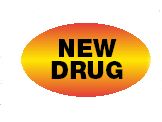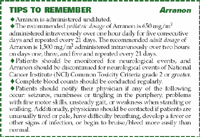New leukemia agent paves way for transplants
A new treatment option for treating T-cell lymphoblastic leukemia (T-ALL) and T-cell lymphoblastic lymphoma (T-LBL) is on the horizon. In 2006, GlaxoSmithKline will begin marketing the recently approved nelarabine (Arranon), a water-soluble pro-drug of the cytotoxic deoxyguanosine analog 9-?-D-arabinofuranosylguanine (ara-G).

Acute lymphoblastic leukemia (ALL), an aggressive cancer of the white blood cells, affects children more often than adults. ALL accounts for 23% of all cancer diagnoses in children under 15 years of age.
Each year, 2,400 children and 1,200 adults are diagnosed with ALL in the United States. There are several forms of ALL. The T-cell immunophenotype (T-ALL) represents a minority of the overall ALL population but has a particularly poor prognosis. Clinically, with T-cell ALL, elevated leukocyte counts and CNS involvement-with leukemic cells in the cerebrospinal fluid-are observed.

While ALL and LBL are devastating types of cancers, less than 200,000 people are affected by these conditions in the United States each year. Therefore, nelarabine was granted orphan drug status and received accelerated approval for treating patients with T-ALL and T-LBL who have not responded to or have relapsed following treatment with at least two other chemotherapeutic regimens. A postmarketing phase III trial will be conducted to verify the drug's clinical benefit.
Without effective treatment, T-ALL and T-LBL are fatal. According to Edward Li, Pharm.D., assistant professor, department of pharmacy practice at the Nesbitt College of Pharmacy and Nursing at Wilkes University, the initial phase of treatment relies upon "different chemotherapeutic protocols and is designed to induce remission and eliminate all measurable disease." Once remission is induced, patients may be prescribed maintenance therapy with daily, weekly, and intermittent medications for two to three years, depending upon the protocol.
Bone marrow transplantation (BMT) or stem cell transplantation (SCT) may be undertaken in individuals who have had poor response to induction or who have suffered from relapses. However, patients are not candidates for BMT or SCT unless remission can be induced.
This, then, is the value of nelarabine. It helps people get to remission so they can go for a stem cell transplant, said Li. It destroys leukemic cells after the drug is demethylated and converted to its active form-that of 5'-triphosphate, ara-GTP. Accumulation of ara-GTP in leukemic lymphoblast cells permits this guanosine triphosphate analog to be incorporated into DNA. Ultimately, ara-GTP, inserted into DNA, interrupts DNA synthesis and results in cell death.
Hematologic toxicities (leukopenia, thrombocytopenia, anemia, and neutropenia) were the most commonly observed adverse effects during clinical studies. Thus, complete blood counts, including platelets, should be monitored regularly. A black box warns of severe neurologic events, full recovery from which has not always occurred-even after cessation of therapy. Additional adverse events include gastrointestinal upset, headache, and blurred vision.
The Author is a clinical writer based in the Philadelphia area.
Targeted Drug Combination Reveals New Activity in Brain Tumors
December 28th 2021A combination of two targeted cancer drugs showed unprecedented, “clinically meaningful” activity in patients with highly malignant brain tumors that carried a rare genetic mutation, according to a clinical trial report by investigators from Dana-Farber Cancer Institute.